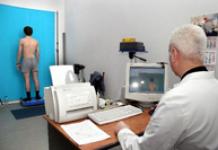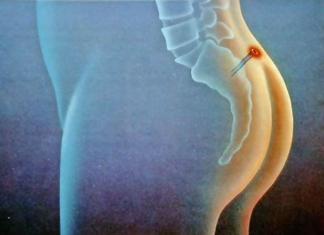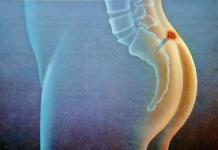Unfortunately, it looks like the search requests sent from your IP address are automated. Therefore, we've had to temporarily block your access to Yandex Search.
To continue searching, please enter the characters from the picture below and click “Continue”.
Cookies are disabled in your browser. This means that Yandex will not be able to remember you in the future. If you're not sure about how to enable cookies, please refer to our .
Why did this happen?
Itʼs possible that these automated requests were sent from another user on your network. If this is the case, youʼll just need to enter the CAPTCHA code once, and weʼll be able to distinguish between you and the other users on your IP address. Then you shouldn't be bothered by this page for a long time.
You could be submitting a large number of automated requests to our search engine. We've developed a service called that has been specially designed to handle such requests.
Your browser may also contain add-ons that send automated requests to our search engine. If this is the case, we recommend disabling these add-ons.
Itʼs also possible that your computer has been infected with a Spambot virus thatʼs using your computer to gather information. It might be worth checking your computer for viruses with an antivirus utility such as CureIt from “Dr.Web”.
If you come across any problems or wish to ask a question, please do not hesitate to contact our Support service using the .
Thursday, 15 August 2019 16:01 + to the quotation bookSince we were actively discussing the news that, let's find out another question.
In the search for extraterrestrial intelligence, scientists often face accusations of "carbon chauvinism" because they expect other life forms in the universe to be composed of the same biochemical building blocks as us, structuring their search accordingly. But life may well be different—and people are thinking about it—so let's explore ten possible biological and non-biological systems that expand the definition of "life."
And after reading, you will say which form is questionable for you, even theoretically.
Methanogens
In 2005, Heather Smith of the International Space University in Strasbourg and Chris McKay of NASA's Ames Research Center produced a paper looking at the possibility of methane-based life, called methanogens. Such life forms could consume hydrogen, acetylene and ethane, exhaling methane instead of carbon dioxide.
This could make possible habitable zones for life on cold worlds like Saturn's moon Titan. Like Earth, Titan's atmosphere is mostly nitrogen, but mixed with methane. Titan is also the only place in our solar system, besides Earth, where there are large liquid reservoirs - lakes and rivers of an ethane-methane mixture. (Underground bodies of water are also present on Titan, its sister moon Enceladus, and Jupiter's moon Europa.) Liquid is considered essential for the molecular interactions of organic life and of course the focus will be on water, but ethane and methane also allow such interactions to take place.
NASA and ESA's Cassini-Huygens mission in 2004 observed a dirty world of -179 degrees Celsius, where water was rock-hard and methane floated through river valleys and basins into polar lakes. In 2015, a team of chemical engineers and astronomers at Cornell University developed a theoretical cell membrane of small organic nitrogen compounds that could function in Titan's liquid methane. They called their theoretical cell the "azotosome," which literally means "nitrogen body," and it had the same stability and flexibility as the terrestrial liposome. The most interesting molecular compound was the acrylonitrile azotosome. Acrylonitrile, a colorless and poisonous organic molecule, is used in acrylic paints, rubber, and thermoplastics on Earth; it was also found in the atmosphere of Titan.
The consequences of these experiments for the search for extraterrestrial life are difficult to overestimate. Not only could life potentially develop on Titan, but it can also be detected by hydrogen, acetylene and ethane traces on the surface. Planets and moons with methane-dominated atmospheres may be found not only around Sun-like stars, but also around red dwarfs in the broader “Goldilocks zone.” If NASA launches the Titan Mare Explorer in 2016, we will have detailed information about possible life on nitrogen as early as 2023.
Life on Silicon
Silicon-based life is perhaps the most common form of alternative biochemistry, a favorite of popular science and science fiction—think Hort from Star Trek. This idea is far from new, its roots go back to the thoughts of H.G. Wells in 1894: “What fantastic imagination could run out of such a proposal: imagine silicon-aluminum organisms - or perhaps silicon-aluminum people? - traveling through the atmosphere from gaseous sulfur, let’s put it this way, through seas of liquid iron with a temperature of several thousand degrees or something like that, slightly higher than the temperature of a blast furnace.”
Silicon remains popular precisely because it is very similar to carbon and can form four bonds like carbon, which opens up the possibility of creating a biochemical system completely dependent on silicon. It is the most abundant element in the earth's crust, excluding oxygen. There are algae on Earth that incorporate silicon into their growth process. Silicon plays a second role after carbon, since it can form more stable and diverse complex structures necessary for life. Carbon molecules include oxygen and nitrogen, which form incredibly strong bonds. Complex silicon-based molecules unfortunately tend to disintegrate. Additionally, carbon is extremely abundant in the universe and has existed for billions of years.
Silicon-based life is unlikely to emerge in environments similar to Earth's because most of the free silicon would be locked up in volcanic and igneous rocks made of silicate materials. It has been suggested that things may be different in a high-temperature environment, but no evidence has yet been found. An extreme world like Titan could support silicon-based life, perhaps coupled with methanogens, since silicon molecules like silanes and polysilanes can mimic Earth's organic chemistry. However, Titan's surface is dominated by carbon, while most of the silicon lies deep below the surface.
NASA astrochemist Max Bernstein has suggested that silicon-based life could exist on a very hot planet, with an atmosphere rich in hydrogen and poor in oxygen, allowing complex silane chemistry with silicon inverse bonds to selenium or tellurium to occur, but this is unlikely, according to Bernstein. On Earth, such organisms would reproduce very slowly, and our biochemistry would not interfere with each other in any way. They could, however, slowly eat up our cities, but “you could use a jackhammer on them.”
Other biochemical options
In principle, there have been quite a few proposals for life systems based on something other than carbon. Like carbon and silicon, boron also tends to form strong covalent molecular compounds, forming different hydride structural variants in which the boron atoms are linked by hydrogen bridges. Like carbon, boron can combine with nitrogen, forming compounds with chemical and physical properties similar to alkanes, the simplest organic compounds. The main problem with boron-based life is that it is a fairly rare element. Boron-based life would make the most sense in an environment where the temperature is low enough for liquid ammonia to occur so that chemical reactions can occur more controlledly.
Another possible life form that has received some attention is arsenic-based life. All life on Earth is made of carbon, hydrogen, oxygen, phosphorus and sulfur, but in 2010 NASA announced that it had found a bacterium, GFAJ-1, that could incorporate arsenic instead of phosphorus into its cellular structure without any consequences to itself. GFAJ-1 lives in the arsenic-rich waters of Mono Lake in California. Arsenic is poisonous to every living thing on the planet, except for a few microorganisms that normally tolerate or breathe it. GFAJ-1 was the first time an organism incorporated this element as a biological building block. Independent experts watered down this statement a bit when they found no evidence of arsenic in the DNA or even any arsenates. Nevertheless, interest in possible arsenic-based biochemistry has reignited.
Ammonia has also been put forward as a possible alternative to water for the construction of life forms. Scientists have proposed the existence of biochemistry based on nitrogen-hydrogen compounds that use ammonia as a solvent; it could be used to create proteins, nucleic acids and polypeptides. Any ammonia-based life forms must exist at low temperatures, at which ammonia takes liquid form. Solid ammonia is denser than liquid ammonia, so there is no way to stop it from freezing when it gets cold. This would not be a problem for single-celled organisms, but would cause chaos for multicellular organisms. Nevertheless, there is a possibility of the existence of single-celled ammonia organisms on the cold planets of the solar system, as well as on gas giants like Jupiter.
Sulfur is believed to be the basis for the beginning of metabolism on Earth, and known organisms whose metabolism includes sulfur instead of oxygen exist in extreme conditions on Earth. Perhaps on another world, sulfur-based life forms could gain an evolutionary advantage. Some believe that nitrogen and phosphorus could also take the place of carbon under rather specific conditions.
Memetic life
Richard Dawkins believes that the basic principle of life is: “All life evolves through the survival mechanisms of reproducing creatures.” Life must be able to reproduce (with certain assumptions) and exist in an environment where natural selection and evolution will be possible. In his book The Selfish Gene, Dawkins noted that concepts and ideas are developed in the brain and spread among people through communication. In many ways, these resemble the behavior and adaptation of genes, which is why he calls them “memes.” Some compare the songs, jokes and rituals of human society to the first stages of organic life - free radicals swimming in the ancient seas of the Earth. Creations of the mind reproduce, evolve and struggle for survival in the realm of ideas.
Similar memes existed before humanity, in the social calls of birds and the learned behavior of primates. As humanity became capable of abstract thought, memes developed further, governing tribal relationships and forming the basis for the first traditions, culture, and religion. The invention of writing further propelled the development of memes, as they were able to spread across space and time, transmitting memetic information in the same way that genes transmit biological information. For some, this is a pure analogy, but others believe that memes represent a unique, if slightly rudimentary and limited, form of life.
Synthetic life based on XNA
Life on Earth is based on two information-carrying molecules, DNA and RNA, and scientists have long wondered whether other similar molecules could be created. While any polymer can store information, RNA and DNA represent heredity, encoding and transmitting genetic information, and are capable of adapting over time through the process of evolution. DNA and RNA are chains of nucleotide molecules made up of three chemical components—a phosphate, a five-carbon sugar group (deoxyribose in DNA or ribose in RNA), and one of five standard bases (adenine, guanine, cytosine, thymine, or uracil).
In 2012, a group of scientists from England, Belgium and Denmark became the first in the world to develop xenonucleic acid (XNA), synthetic nucleotides that functionally and structurally resemble DNA and RNA. They were developed by replacing the sugar groups of deoxyribose and ribose with various substitutes. Such molecules had been made before, but for the first time in history they were capable of reproducing and evolving. In DNA and RNA, replication occurs using polymerase molecules that can read, transcribe, and reverse transcribe normal nucleic acid sequences. The group developed synthetic polymerases that created six new genetic systems: HNA, CeNA, LNA, ANA, FANA and TNA.
One of the new genetic systems, HNA, or hexitonucleic acid, was robust enough to store enough genetic information that could serve as the basis for biological systems. The other, threosonucleic acid, or TNA, emerged as a potential candidate for the mysterious primordial biochemistry that reigned at the dawn of life.
There are many potential applications for these advances. Further research could help develop better models for the emergence of life on Earth and would have implications for biological speculation. XNA may have therapeutic applications because it can create nucleic acids to treat and communicate with specific molecular targets that will not degrade as quickly as DNA or RNA. They could even form the basis of molecular machines or even artificial life forms.
But before this is possible, other enzymes must be developed that are compatible with one of the XNAs. Some of them have already been developed in the UK at the end of 2014. There is also the possibility that XNA may cause harm to RNA/DNA organisms, so safety must come first.
Chromodynamics, weak nuclear force and gravitational life
In 1979, scientist and nanotechnologist Robert Freitas Jr. proposed possible non-biological life. He stated that the possible metabolism of living systems is based on four fundamental forces—electromagnetism, the strong nuclear force (or quantum chromodynamics), the weak nuclear force, and gravity. Electromagnetic life is the standard biological life we have on Earth.
Chromodynamic life could be based on the strong nuclear force, considered the strongest of the fundamental forces, but only over extremely short distances. Freitas suggested that such an environment might be possible on a neutron star, a heavy rotating object 10-20 kilometers in diameter with the mass of a star. With incredible density, a powerful magnetic field, and gravity 100 billion times stronger than Earth, such a star would have a core with a 3-kilometer crust of crystalline iron. Beneath it would be a sea of incredibly hot neutrons, various nuclear particles, protons and atomic nuclei, and possible neutron-rich "macronuclei". These macronuclei could, in theory, form large supernuclei similar to organic molecules, with neutrons acting as the equivalent of water in a bizarre pseudo-biological system.
Freitas saw life forms based on the weak nuclear force as unlikely, since weak forces operate only in the subnuclear range and are not particularly strong. As beta radioactive decay and free neutron decay often demonstrate, weak force life forms could exist with careful control of the weak forces in their environment. Freitas imagined beings made of atoms with excess neutrons, which become radioactive when they die. He also suggested that there are regions of the Universe where the weak nuclear force is stronger, and, therefore, the chances of such life appearing are higher.
Gravitational beings can also exist, since gravity is the most widespread and effective fundamental force in the Universe. Such creatures could receive energy from gravity itself, receiving unlimited nutrition from the collisions of black holes, galaxies, and other celestial objects; smaller creatures - from the rotation of planets; the smallest - from the energy of waterfalls, wind, tides and ocean currents, possibly earthquakes.
Life forms from dust and plasma
Organic life on Earth is based on molecules with carbon compounds, and we have already figured out possible compounds for alternative forms. But in 2007, an international group of scientists led by V.N. Tsytovich from the Institute of General Physics of the Russian Academy of Sciences documented that when the right conditions Inorganic dust particles can assemble into helical structures, which will then interact with each other in a manner characteristic of organic chemistry. This behavior also occurs in the plasma state, the fourth state of matter after solid, liquid and gas, when electrons are stripped from atoms, leaving behind a mass of charged particles.
Cytowicz's team discovered that when electronic charges are separated and the plasma is polarized, particles in the plasma self-organize into the shape of electrically charged corkscrew-like spiral structures and are attracted to each other. They can also divide to form copies of the original structures, like DNA, and induce charges in their neighbors. According to Tsytovich, “these complex, self-organizing plasma structures meet all the necessary requirements to be considered candidates for inorganic living matter. They are autonomous, they reproduce and they evolve.”
Some skeptics believe such claims are more an attempt to attract attention than serious scientific claims. Although helical structures in plasma may resemble DNA, similarity in form does not necessarily imply similarity in function. Moreover, the fact that spirals reproduce does not mean the potential for life; clouds do this too. What's even more depressing is that most of the research was done on computer models.
One of the experiment participants also reported that while the results did indeed resemble life, in the end they were "just a special form of plasma crystal." And yet, if inorganic particles in plasma can grow into self-replicating, evolving life forms, they may be the most abundant form of life in the universe, thanks to the ubiquity of plasma and interstellar dust clouds throughout the cosmos.
Inorganic chemical cells
Professor Lee Cronin, a chemist at the College of Science and Engineering at the University of Glasgow, dreams of creating living cells from metal. He uses polyoxometalates, a series of metal atoms bonded to oxygen and phosphorus, to create cell-like vesicles he calls "inorganic chemical cells," or iCHELLs (an acronym that translates to "neochlets").
Cronin's group began by creating salts from negatively charged ions of large metal oxides bonded to a small, positively charged ion like hydrogen or sodium. A solution of these salts is then injected into another saline solution, full of large, positively charged organic ions bound to small, negatively charged ones. The two salts meet and exchange parts so that the large metal oxides become partners with the large organic ions, forming a kind of bubble that is impenetrable to water. By changing the backbone of the metal oxide, it is possible to ensure that the bubbles acquire the properties of biological cell membranes that selectively allow and release chemical substances out of the cell, potentially allowing the same type of controlled chemical reactions to occur that occur in living cells.
The team also made bubbles within bubbles to mimic the internal structures of biological cells and made progress in creating an artificial form of photosynthesis that could potentially be used to create artificial plant cells. Other synthetic biologists point out that such cells may never become alive unless they have a replication and evolution system like DNA. Cronin remains hopeful that further development will bear fruit. Among possible applications This technology also includes the development of materials for solar fuel devices and, of course, medicine.
According to Cronin, "The main goal is to create complex chemical cells with living properties that can help us understand the development of life and follow the same path to bring new technologies based on evolution into material world- a kind of inorganic living technology."
Von Neumann probes
Artificial life based on machines is a fairly common idea, almost trivial, so let's just look at von Neumann probes so as not to ignore it. They were first invented in the mid-20th century by the Hungarian mathematician and futurist John von Neumann, who believed that in order to reproduce the functions of the human brain, a machine must have self-control and self-healing mechanisms. This is how he came up with the idea of creating self-replicating machines, which are based on observations of the increasing complexity of life in the process of reproduction. He believed that such machines could become a kind of universal designer, which could allow not only the creation of complete replicas of itself, but also improve or change versions, thereby realizing evolution and increasing complexity over time.
Other futurists like Freeman Dyson and Eric Drexler quickly applied these ideas to the field of space exploration and created the von Neumann probe. Sending a self-replicating robot into space could be the most effective way colonization of the galaxy, because in this way it is possible to capture the entire Milky Way in less than one million years, even being limited by the speed of light.
As Michio Kaku explained:
"A von Neumann probe is a robot designed to reach distant star systems and create factories that will build copies of themselves by the thousands. A dead moon, not even a planet, could be an ideal destination for von Neumann probes, since it would be easier to land and take off there from these moons, and also because there is no erosion on the moons. The probes could live off the earth, mining iron, nickel and other raw materials to build robotic factories. They would create thousands of copies of themselves, which would then disperse in search of other star systems. ".
Over the years, various versions of the basic von Neumann probe idea have been conceived, including exploration and exploration probes for the quiet exploration and observation of extraterrestrial civilizations; communications probes scattered throughout space to better pick up alien radio signals; working probes for the construction of supermassive space structures; colonizing probes that will conquer other worlds. There may even be guiding probes that will take young civilizations into space. Alas, there may also be berserker probes, whose task will be to destroy traces of any organic matter in space, followed by the construction of police probes that will repel these attacks. Given that von Neumann probes could become a kind of cosmic virus, we should approach their development with caution.
Gaia hypothesis
In 1975, James Lovelock and Sidney Upton jointly wrote an article for New Scientist entitled "The Search for Gaia." Adhering to the traditional view that life began on Earth and flourished due to the right material conditions, Lovelock and Upton proposed that life thus took an active role in maintaining and determining the conditions for its survival. They suggested that all living matter on Earth, in the air, in the oceans and on the surface is part of a single system that behaves like a superorganism that is able to adjust the temperature on the surface and the composition of the atmosphere in a way necessary for survival. They named this system Gaia, after the Greek goddess of the earth. It exists to maintain homeostasis, thanks to which the biosphere can exist on earth.
Lovelock had been working on the Gaia hypothesis since the mid-60s. The basic idea is that the Earth's biosphere has a series of natural cycles, and when one goes awry, others compensate so as to maintain life capacity. This could explain why the atmosphere is not made entirely of carbon dioxide or why the seas are not too salty. Although volcanic eruptions made the early atmosphere predominantly carbon dioxide, nitrogen-producing bacteria and plants emerged that produced oxygen through photosynthesis. After millions of years, the atmosphere has changed in our favor. Although rivers transport salt to the oceans from rocks, ocean salinity remains stable at 3.4% as salt seeps through cracks in the ocean floor. These are not conscious processes, but the result of feedback loops that keep the planets in habitable equilibrium.
Other evidence includes that if not for biotic activity, methane and hydrogen would disappear from the atmosphere in just a few decades. Moreover, despite the sun's temperature increasing by 30% over the past 3.5 billion years, the average global temperature has fluctuated by only 5 degrees Celsius, thanks to a regulatory mechanism that removes carbon dioxide from the atmosphere and locks it in fossilized organic matter.
Initially, Lovelock's ideas were met with ridicule and accusations. Over time, however, the Gaia hypothesis influenced ideas about the Earth's biosphere and helped shape their holistic perception in the scientific world. Today, the Gaia hypothesis is respected rather than accepted by scientists. It is rather a positive cultural framework within which scientific research on the Earth as a global ecosystem should be conducted.
Paleontologist Peter Ward developed the competitive Medea hypothesis, named after the mother who killed her children in Greek mythology, the basic idea of which is that life is inherently self-destructive and suicidal. He points out that historically, most mass extinctions have been caused by life forms, such as microorganisms or pants-wearing hominids, that wreak havoc on Earth's atmosphere.
sources
Based on materials from listverse.com
http://hi-news.ru/science/10-vozmozhnyx-form-zhizni.html
|
Tags: |

The appearance, lifestyle and behavior of these marsupials almost do not fit into the usual ideas of what real kangaroos should be like. Soft chestnut-colored fur, a small rounded head, short hind legs, the ability to masterfully climb trees - this and much more distinguishes tree kangaroos from their relatives living on the ground.
Among their branch-climbing brethren, Goodfellow's tree kangaroos (lat. ) - the cutest. This feature was also noticed by Australian biologist Tim Flannery, who studied tree kangaroos in New Guinea for many years. That is why Goodfellow Flannery gave the name to one of the subspecies of tree kangaroos Dendrolagus goodfellowi pulcherrimus, which means “most beautiful” in Latin.

Of the twelve species of tree kangaroos, ten live in the tropical forests of New Guinea, spreading between the plains and highlands, and two more species have moved to the north of the Australian mainland. Goodfellow's tree kangaroos preferred to climb higher, choosing for life the inaccessible foggy forests in the southeast of New Guinea, hiding in the labyrinths of the Owen Stanley mountain range at an altitude of seven hundred to two and a half thousand meters above sea level.

The arboreal lifestyle left its mark not only on the appearance of Goodfellow's kangaroos, but also on their habits and manner of movement. Their hind legs are not as long as those of ordinary kangaroos, and their front legs, powerful with wide soles, are equipped with tenacious, downward-curved claws.
A strong fluffy tail, more than eighty centimeters long, helps to balance between branches and make almost ten-meter jumps.

Goodfellow's tree kangaroos are not only excellent climbers, but also hardy, strong animals with strong bones. To avoid meeting their main enemy, the New Guinea harpy, they do not hesitate to jump from a height of twenty meters, remaining completely unharmed. However, once on earth, our heroes turn into clumsy, helpless creatures. Unable to make more than two long leaps in a row, Goodfellow's tree kangaroos move in small steps, bouncing and stretching their torso forward to balance the heavy tail that pulls them back.

Hunger forces tree kangaroos to descend to the ground: in addition to leaves, these marsupials are not averse to feasting on green grass, flowers, and even the occasional juicy cereal, for which they make long journeys to the outskirts of the forest. Special bacteria living in their stomach help them digest the huge amount of cellulose contained in plants eaten overnight.

Having returned to their native element among the tree branches, kangaroos are transformed: all their movements become fast, dexterous, and confident. To climb to the very crown in a matter of minutes, they just need to grab the tree trunk with their front paws and push upward from it with their hind paws in short, powerful movements. For their ability to masterfully climb trees, tree kangaroos are often called “marsupial monkeys.”

Much of the primary forest has been destroyed through clearing of lowland tropical forests. Those tree kangaroos that remain in the mountain forests have had to contend with the fragmentation of their habitats, which has significantly limited their distribution. Their survival seems to be ensured only by optimal numbers in national parks and reserves, and the almost complete absence of any large tree-climbing predators or competitors. There is currently no accurate estimate of the number of Goodfellow's kangaroos that survive in the wild. They are primarily threatened by hunting for meat and habitat destruction from logging, mining, oil exploration, and agriculture. What can we do to help them? Adequate protection of their habitat through the formation of national parks.
















sources
http://www.zoopicture.ru/
http://www.zooeco.com/
http://www.zooclub.ru/
I can’t help but remind you who this animal is and about something similar
This is a copy of the article located at .|
Tags: |

I had to take a pill now and was wondering why the pills used to be round without shells, but now they are like this. Well, probably to pack powder inside, which will be better absorbed inside a person. What if you open this capsule and drink the powder like you used to drink in sachets?
Starch wafers can be considered the predecessors of modern gelatin capsules. The first mention of them, according to scientists, dates back to 1500 BC. e. and discovered by Georg Ebert in ancient Egyptian papyrus. However, later, unfortunately, they were forgotten. Therefore, the capsules in their modern form can be considered a relatively young dosage form - the first patent for the manufacture of gelatin capsules for pharmaceutical purposes was received in 1833 by the French pharmacist student Francois Mothe and the Parisian pharmacist Joseph Dublanc.
The first capsules were prepared by dipping a small leather bag filled with mercury into molten gelatin. Once the gelatin film had dried and hardened, the mercury was removed and the resulting capsule could be easily removed. The capsules were filled with medication (at that time only liquid - oils or oil solutions, which were administered using a pipette), and the hole was hermetically sealed with a drop of gelatin. That same year, Mothe received an additional patent for a process in which the leather pouch containing mercury was replaced by an olive-shaped metal pin. This method, in an improved form, is still used in laboratory practice in the manufacture of soft gelatin capsules.

In 1846, another Frenchman, Jules Leubi, received a patent for a “method for making medicinal coatings.” He was the first to produce two-section capsules, which he obtained by dipping metal pins attached to a disk into a gelatin solution. The two parts were fitted to each other and formed a “cylindrical box in the shape of a silkworm cocoon.” Pharmacists could place powders or mixtures thereof, prepared according to a doctor’s prescription, into these capsules. In its modern form, this method is used in the production of hard bivalve gelatin capsules.
The French also took the lead in the invention of apparatus for producing and filling two-section capsules (Limousine, 1872). However, later, the palm in the development of the production of two-section gelatin capsules and preparations in this form passed to America - in 1888, engineer John Russell from Detroit patented a process for making gelatin capsules convenient for industrial production. And in 1895, the method was improved by Arthur Colton, a specialist from the famous company Parke, Davis & Co: the productivity of his installation ranged from 6,000 to 10,000 capsules per hour. Improved and significantly more productive Colton machines are still in use today. The same company was one of the first to use automatic machines for filling and subsequent closing of bivalve capsules.

Before the tablet reaches the diseased organ and accumulates in its cells in a therapeutic concentration, it has to overcome many barriers.
The process of drug absorption occurs in small intestine, but the drug needs to reach it! The first stop on the pill's route is the stomach. As you know, food is digested here, which for many medicinal drugs is tantamount to destruction. And the medicine must “outwit” the enzymes, which strive with all their might to destroy substances foreign to the body. Scientists understood: in order to protect the medicine from the aggressive gastric environment, it must be coated with a coating that would be resistant to acid.
And in the last century they managed to implement their plan - they invented a special case for the tablet. It was made from gelatin or starch mass. And this dosage form began to be called a capsule. Translated from Latin, capsula means “case” or “shell”.

Some people believe that the capsule shell is just an element of the packaging; they open it and consume only the contents. But this cannot be done! Firstly, taking a medicinal substance, which is sometimes very aggressive towards gastrointestinal tract, may cause harm. Don't forget about it! After all, the capsule shell is designed to ensure that the mucous membranes of the esophagus and stomach are not damaged.
Secondly, the medicine is packaged in a capsule in order to preserve all of it unique properties. The fact is that the special capsule shell is resistant to the destructive work of stomach acid. Made this way specifically to dosage form could easily bypass the acidic environment of the stomach and begin to work in the small intestine, where the environment is alkaline.
In other words, taking the medicine without a “body armor” can negate the healing effect of the capsule. The medicine simply will not reach the absorption area, where there are conditions for its absorption - the effect of the medicine will be neutralized by the acid.
In a word, a capsule cannot do without a shell - it protects against premature and useless, and maybe in some cases harmful, absorption.
Previously, capsule cases were made exclusively from gelatin. But science does not stand still, and now the shell is made from pullulan and hypromellose.
Pullulan is a water-soluble polysaccharide produced by fermentation. Hypromellose is made from cellulose raw materials. Such capsule shells are absolutely harmless to humans and easily dissolve in the intestines. They are able to mask the taste or smell of specific medicinal compounds. Some capsules contain special auxiliary substances in the shell, designed to change the speed of movement of the capsule through the gastrointestinal tract in order to release medicinal substances at a given location.
To stay up to date with upcoming posts on this blog. Subscribe, there will be interesting information that is not published on the blog!

Surprisingly, this solidarity among drivers is still alive today. It may still be less than in Soviet times, but it is alive.
But recently I heard an opinion that for blinking lights and a warning about traffic police officers, they can solder a fine if they notice.
And on what basis...
In most cases, when drawing up a protocol in such a case, traffic police officers use clause 19.2 of the Traffic Rules. It states that high beams should be switched to low beams in populated areas. Of course, police can use such a point only in cases where drivers warn each other in a populated area or on the way out of it. Thus, any (even short-term) switching on of the wrong lights can be considered a violation.
Note: in accordance with 12.20. Code of Administrative Offenses of the Russian Federation, any violation of the rules for the use of external lighting devices entails a fine or violation.

Despite all this, it is still absolutely legal to blink. For example, paragraph 19.2 of the traffic rules states that a motorist has the right to use high beam blinking in order to ask oncoming cars to switch to low beam at the moment of blinding. This must be done no less than 150 meters before vehicle.
Important: if severe blinding occurs, the driver must turn on the hazard lights and, without changing lanes, reduce the speed and then stop.
Finally, in accordance with paragraph 19.11 of the traffic rules, you can use switching from high to low beam to prevent overtaking. The points mentioned will help protect against the inspector’s attacks. If the traffic police officer persists, you should indicate in the protocol that you do not agree with the interpretation of the violation and state your version of what happened.
|
Tags: |
And although sailing ships are experiencing a period of serious decline in our time, new developments are still appearing in this area, which allow modern sailing ships to be faster, taller and stronger than their predecessors. An example is "flying" ship Hydroptere - fastest sailboat in the world!
A couple of years ago, the world was rocked by a project that, by spreading its sail-like wings, could turn into an airplane and fly over the water. Of course, these are just the designers’ imaginations, and in reality such a ship never appeared. The same cannot be said about another flying ship - the sailboat Hydroptere.
Hydroptere was created by a group of French engineers in order to show the excellent prospects of sailing vehicles on water. After all, this sailboat can accelerate to a speed of 55.5 knots, which is equal to 103 kilometers per hour.
At the same time, he does not float on the water, but hovers above it. The more the Hydroptere sailboat gains speed, the higher it rises above the surface on hydrofoils. As a result, the contact area of the housing with water is reduced to a minimum of two square meters.
Since its creation, the flying sailboat Hydroptere has regularly broken speed records both over short and long distances. The new goal for this ship is to cover the distance between Los Angeles and Honolulu, the capital of the Hawaiian Islands, as quickly as possible.
Needless to say, the Hydroptere has neither an electric motor nor an internal combustion engine? The only force that moves him forward is the wind. And the very existence of Hydroptere is a clear demonstration that sails should not be consigned to the dustbin of history - they may well have not only a great past, but also a great future!
Not to swim, but to glide. The pursuit of speed is primarily a fight against resistance, to reduce which the designers tried to make the body extremely narrow. As the speed increases, as is known, the resistance of the water environment increases, and at some point the hull “rests” on its theoretical maximum, above which the speed cannot be raised in principle, and Crossbow II has come very close to the limit.
However, in 1986 Pascal Maca broke this record in the Canaries. And most importantly, on what - on a regular board with a sail, windsurfing. Despite its apparent simplicity, in a sense, a windsurf is an ideal sailboat, from which everything unnecessary has been removed, leaving only a mast, a sail and a small planing hull. The main word here is “planing”, that is, sliding along the surface of the water. In motorboating, gliders have long become a common occurrence, but no one has been able to get a sailboat to plan to windsurf - it simply capsizes.
The new technology immediately set off a bunch of records - within two years Eric Beale broke the 40 knots bar, and almost every year someone raised it, little by little getting closer to the coveted 50 knots. Windsurfers even built a special canal in the south of France for speed races, which they jokingly nicknamed the French Trench. The sailboats seemed to have completely written off everything.
“The main principle is not to swim on water, but to fly - this is our long-standing dream,” said Eric Tabarly. “We must forget about Archimedes’ laws if we want to achieve breakneck speeds.”
Wind in my head. But then crazy Australian Simon McKeon intervened and figured out how to make his racing trimaran Yellow Pages Endeavor plan. Three flat floats formed a triangle, preventing capsizing, and McKeon used a wing instead of a sail. At full speed, only two floats touched the water, and the third, with two crew members inside, rose into the air.
Hand on heart, we admit that the Yellow Pages Endeavor resembled a classic sailboat even less than a windsurf, but, nevertheless, the yachting community happily accepted it into its arms.
And so in October 1993, Yellow Pages Endeavor, driven by Simon McKeon, brought worldwide fame to the small beach of Sandy Point in his native Australia, reaching a speed of 46.52 knots (86.15 kilometers per hour) and setting a new world record. Hooray! Sailboats have regained the palm. For eleven whole years, no one could surpass this record on anything.
Places. To achieve high speed on the water surface, you need a paradoxical combination of even and strong wind and “flat” water, that is, the complete absence of waves. In addition, it is necessary that the wind blows at an angle of 120-140 degrees to the edge of the beach, and there should be no reefs or large rocks at the bottom. In search of suitable conditions, record holders and their teams are ready to travel around the world and live in impassable wilderness for years, testing and improving their devices.
In terms of the number of sailing records, the first place is held by the south of France, or more precisely by the Canal Sainte-Marie, specially built near Marseille, named after the town of the same name: a 30-meter strip of water just over a kilometer long stretches along the low shore of the Gulf of Lyon. From November to April, the mistral blows in these parts - a cold, dry wind that reaches speeds of up to 40 knots. It was here in 2004 that Finian Maynard reclaimed the windsurfing record with a top speed of 46.8 knots. After that, his achievement was improved a couple more times in the same channel, coming close to 50 knots.
The place really turned out to be a record - not far from Marseille in 2009, the giant ocean hydrofoil trimaran Hydroptere broke the record of 50 knots, covering 500 meters at a speed of 51.36 knots.
Flying on wings. The most ambitious project in fast sailing, the Hydroptere, began back in 1975, when a group of aeronautical engineers were able to convince Eric Tabarly, a French sailing legend, of the promise of a hydrofoil racing yacht. Almost ten years after the start of development, the trimaran was launched.
Hydroptere was ahead of its time, and this circumstance played a cruel joke on its creators: even the most advanced materials of that era did not meet the strength requirements.
The cross beams, made of titanium, could not withstand loads and vibrations. Even supports with hydraulic shock absorbers could not solve the problem. The situation was saved only when composite materials began to be widely used in construction. Not a single automatic system, according to legend, could cope with the alignment of the obstinate apparatus, and then it was necessary to install a stripped-down autopilot from the Mirage combat fighter. Many of the designers who created the Hydroptere had actually designed combat fighters before.
“The main principle is not to float on water, but to fly - this is our long-standing dream,” said Eric Tabarly. “We must forget about Archimedes’ laws if we want to achieve breakneck speeds. We must remove the boat from the water and overcome hydrodynamic resistance. The higher the speed, the more the lift increases - the principle of operation is simple and based on the same law that allows airplanes to take off. The concept is completely logical, but the forces involved are such that it was impossible to implement it until the advent of new high-tech materials such as carbon and titanium. to let a big boat ride on the waves."
Yacht with a wing. Hydroptere broke the absolute record by accident: it was created for other records - ocean ones. Meanwhile, two more athletes were specially preparing to overcome the 50-knot bar. The first is the already famous Australian Simon McKeon with a new version of his trimaran Yellow Pages. However, after Hydroptere's record-breaking run in 2009, his enthusiasm waned.
Those who did not have any problems with enthusiasm were the creators of the English record sailing ship SailRocket. The project began as a thesis project by four University of Southampton students in 2003. The idea was crazy to the point of genius - the sail-wing was supposed to create not only thrust, but also lift, lifting one float from the water. The hydrofoil on the hull with the pilot (or rather, the wing) is designed not to lift the car above the water, but, on the contrary, to press it down, not allowing it to come off the water surface! What was not always successful: several times the SailRocket soared into the air like a real rocket.
The development of the hydrofoil and rigid sail was carried out as part of the graduation theses of students at the same university. With a working model on a scale of 1:5, the team members went to the London Boat Show in search of a sponsor willing to support young designers.
Instead of one wealthy company willing to sign checks, they had a long list of companies willing to provide in-kind financial assistance. The students had no idea how much more useful such cooperation would be. Of course, they needed a lot of patience, ingenuity and strength. But, according to Paul Larsen, the permanent project manager, the whole undertaking cost them one tenth of the amount that they would have had to pay if they had at least some financial resources.
Now (2012 ujl) the team sits in Walvis Bay, Namibia, waiting for the right wind and continually trying to break the world record. And very close to them, in the town of Luderitz, in a specially dug 700-meter canal, the best kiters in the world will try to update the same speed record at the Luderitz Speed Event-2010. The Hydroptere project is now led by Alan Thebault. He is in charge of the construction of the ocean record holder Hydroptere Maxi, which will conquer the main world sailing record: a miracle of design thought should travel around the world in less than 40 days.
Read this and think about it! We gathered our courage, strained our bodies, which had become decrepit after 14 days, and cheerfully walked along the deck. But our Gorbatko, after a 5-day flight, could not walk on his own. Nikolaev, after an 18-day flight, almost died in the helicopter, while Sevastyanov, in anticipation of trouble, crawled to his friend on all fours. No, strain your will, stand up, and, counting “one - two,” walk in a ceremonial march. And then you can go to bed.
Ill. 10.A) October 22, 1968 Essex, 35 minutes after splashdown. The crew of Apollo 7 allegedly after 11 days of weightlessness. b) December 27, 1968 Aircraft carrier Yorktown. The Apollo 8 crew exited the rescue helicopter. Allegedly after 6 days of weightlessness.
On December 21, 1968, Apollo 8 supposedly headed for the Moon, circled it 10 times and returned to Earth on December 27. And now the male trio poses picturesquely by a rescue helicopter that has just landed on the deck of the USS Yorktown (ill. 10b). For 6 days these vigorous people were supposedly in complete weightlessness. William Anders (right) is a newcomer to space according to NASA. But on appearance, whether a beginner or not, there is no difference. All three are good! Free poses, free gestures, standing firmly on your feet. No doctors, no stretchers, no just people helping to stand! What helped both the “space veterans” and the “newcomers” to look equally good and feel so great?
5) 1969 “Apollo 9”,D. McDivitt, D. Scott, R. Schweikart, 10 days from the rocket launch until the return of the “astronauts”
6) 1969 “Apollo 10”, Y. Cernan, P. Stafford, D. Young, 6 days from the launch of the rocket until the return of the “astronauts”
Ill. 11. A) March 13, 1969. The Apollo 9 cheerleaders are walking allegedly after 10 days spent in zero gravity. b) May 29, 1969 Vimes of Apollo 10, allegedly 8 days those flying around the moon got out of the rescue helicopter
7) 1969 “Apollo 11”. N. Armstrong, E. Aldrin, M. Collins, 8 days from the launch of the rocket until the return of the “astronauts”
8) November 1969 “Apollo 12”. C. Conrad, A. Bean, R. Gordon, 10 days from the launch of the rocket until the return of the “astronauts”
Photo Fig. 12a shows the Apollo 11 crew allegedly returning from the Moon. He leaves the rescue helicopter that arrived aboard the aircraft carrier Hornet. Several tens of minutes have passed since the splashdown. The “astronauts” exit the helicopter wearing gas masks and insulating overalls. NASA is afraid of infecting earthlings with mythical and deadly lunar bacteria. The pretext is far-fetched; the isolation ward was not invented because of lunar microbes. But we are more interested in the “lunauts”. One of the three must be Michael Collins. According to NASA, he did not land on the Moon, which means he spent the entire 8 days of the flight in continuous weightlessness, while his two comrades allegedly landed on the Moon and rested from weightlessness for 1 day. However, it is impossible to understand where Collins is and where is not Collins without a hint from NASA. All the “lunauts” walk quite confidently and at ease, without anyone’s help, greeting the respectable audience as they go. No psychomotor impairments. Neither stretchers nor chairs for carrying their supposedly weakened bodies are visible.
Ill. 12. The first vigorous people to return from the “Moon”.A) July 24, 1969 Aircraft carrier Hornet. The crew of Apollo 11 after allegedly returning from the Moon. According to NASA, M. Collins spent the longest time in zero gravity - 8 days nonstop; b) November 24, 1969 Aircraft carrier Hornet. The Apollo 12 crew after returning supposedly from the Moon. According to NASA, R. Gordon allegedly spent the longest time in zero gravity - 10 days nonstop.
In photo ill. 12b, the crew of Apollo 12, which allegedly returned from the Moon, leaves a rescue helicopter that arrived aboard the same Hornet aircraft carrier. One of the three must be Richard Gordon. He, according to NASA, circled around the Moon and spent all 10 days of the flight in weightlessness, the other two allegedly had a break from weightlessness on the Moon for 32 hours. But everyone looks cheerful. No psychomotor impairments. Conclusion of the author of the article - Neither those (A – 11) nor the others (A – 12) are familiar with weightlessness.
9) 1970 “Apollo 13”. D. Lovell, D. Swigert, F. Hayes, 6 days from the launch of the rocket until the return of the “astronauts”
Ill. 13. And these bodryaki allegedly flew around the moon
April 17, 1970 Aircraft carrier Iwo Jima. Return of the Apollo 13 crew. Everyone, according to NASA, was in zero gravity 6 days.
Photo Fig. 13 shows the crew of Apollo 13 that allegedly flew around the Moon. He was taken aboard the USS Iwo Jima. Everyone allegedly spent 6 days in zero gravity. No psychomotor impairments. There is no difference in this regard from the people around them, who have obviously never been in space. The conclusion is the same - I'm not familiar with weightlessness.
10) 1971 “Apollo 14”, A. Shepard, E. Mitchell, S. Rusa, 10 days from the launch of the rocket until the return of the “astronauts”
Ill. 14. Third batch bodryakov from Luna.
February 9, 1971. Aircraft carrier New Orleans. The Apollo 14 crew after allegedly returning from the Moon. According to NASA, S. Rusa spent the longest of all of them in zero gravity - 10 days nonstop.
Nothing significantly new compared to A – 11 and A – 12.
11) 1971 “Apollo 15”, D. Scott, D. Irwin, A. Worden, 12 days from the launch of the rocket until the return of the “astronauts”.
An uninvited witness in the skies over the Pacific Ocean .
Apollo 15 was, according to NASA, the fourth spacecraft to land on the Moon. The return looked quite ordinary. A rescue helicopter flew to the splashed-down capsule and delivered the crew aboard the aircraft carrier Okinawa. The fourth batch of “vigorous men from the Moon” walked along the carpet just as cheerfully and with dignity (ill. 15a), as did the crews of all previous Apollos (and the crews of Gemini 5 and 7). The masquerade with protection against lunar microbe bacteria was no longer used. It is worth paying attention to the man in a brown suit. This is Robert Gilruth, director of the NASA Manned Flight Center (Houston), the real inspirer and organizer of all NASA “manned flights” from the very beginning of the space age.
Ill. 15. A) August 7, 1971. Aircraft carrier "Okinawa". The crew of Apollo 15 after allegedly returning from the Moon. According to NASA, A. Worden spent the longest of all of them in zero gravity - 12 days nonstop; b) The pilot of a scheduled passenger airliner saw the capsule being dropped from a large aircraft at approximately the time and place when and where Apollo 15 was returning “from the Moon”; V) This is what a test drop of a Mercury spacecraft capsule looks like from a military transport aircraft.
In the book “We Never Went to the Moon” (Cornville, Az.: Desert Publications, 1981), B. Kaysing says on page 75: “During one of my talk shows, a airline pilot called and said that he saw the Apollo capsule being dropped from a large plane around the time the astronauts(“A-15” - A.P.) were supposed to “return” from the Moon. Seven Japanese passengers also observed this incident…».
Note. Dumping capsules (descent vehicles) of spacecraft was a fairly routine technical operation in those years. It was used when testing the parachute system for launching the capsule, as well as when testing emergency landing/splashdown situations. Soviet specialists did this more than once. Americans too (ill. 15c).
Here is another interesting topic that is often raised on the Internet.
Let's pay attention to ablative protection - a thick layer of “coating” that burns during descent so that the spacecraft itself does not burn out, much like the evaporation of boiling water in a kettle/samovar protects it from damage for the time being. On Soviet descent vehicles, the thickness of this layer was measured in centimeters, and the mass - in hundreds of kilograms (too lazy to Google - almost up to one and a half tons). See the completely burnt declared Gagarin Vostok-1 and one of the modern Soyuz-TMA with a space tourist:
Before Apollo there were only low-orbit flights - Mercury, Gemini.
Now we go to the NASA website and look for what kind of thing it was
Wonderful crap. Beautiful, like a brand new galvanized bucket.
What's not to like?
Is the thermal compensation stamping made transverse? Well, yes, a stupid engineering solution. And what? We do what we want.
No ablative protection? Big deal. In total, the air flow speed is up to 6-7 kmsec, and the temperature is up to 11000° Celsius (and for a short time, much more). Bullshit. Galvanization will hold up. It is covered with a super protective layer that can withstand temperatures up to 3000°C. What are you saying? The Soviet descent vehicles had a protective layer of up to 8 cm, and even then it burned up in the plasma? Why are these scoops so bad? We have nanotechnology. It’s a millimeter coating, but it holds better than theirs at 8 cm. Well, it’s hard to explain the fact that we then multiplied such a wonderful, simple and excellent design by zero and started making ablative protection and heat shields for Apollo, but we’ll come up with something .
Not the slightest sign of the screws locking? Well, the fact that there will be wild vibration is nothing particularly scary here. Well, the fastening will loosen, washers and sheathing sheets will begin to dangle and rattle... And if the edge gets stuck, the entire sheathing may be torn off - well, yes, it’s quite possible, so what? They flew away English language They tell you: they flew! And all is well! Maybe in those years it was generally fashionable for hypersonics to seat propellers on office glue.
The washers are of such a huge diameter that it’s funny? Slightly tighten the washer with the screw - its edges will rise and the air flow along with the screws themselves, which the M5 approximately pulls out? And to hell with them. Maybe it will work out. The Lunar Chicken Coop over there in the neighboring studio was held together with Cosmic Scotch tape - and nothing happened, people grabbed it.
Recessed to improve aerodynamics? What kind of secret? We don’t know, we don’t know... Stupid? Why are we stupid? We're all like that here at NASA.
Half the screws weren't screwed in yet? So they still won’t be able to hold anything under such loads. And then, we reduced the mass of the ship. You can't screw in a couple of thousand - and the carrying capacity has already increased. And in general, your words are offensive - maybe we’ll have time to complete them just before the flight! You’re finding fault, but in fact you need to praise!
Well, you should - so I praise you. Well done.
But I don’t even know what kind of gates these piano hinges of sealed hatches fit into
Let me remind you that the gates to Gemini open outwards. The pressure inside is 0.3 atmospheres, and outside is zero.
And such funny loops.
In Soviet spaceships, the hatches opened only inward. The pressure inside should press down on the hatches, reducing the likelihood of depressurization, and not vice versa.
But where do you put this crap?
Do you have a good idea of what would happen to this tin at a speed slightly less than the first cosmic speed? Say, at 7000 m/s?
The speed of modern aircraft, if anything, is about 200 m/sec.
Remember how a hurricane leaves no stone unturned at a speed of 100 m/sec.
Compare with 7000 m/s.
So this bucket did not fly into space.
Or the second option - it flew, but without people inside, therefore there were no tasks to ensure safety, but only an imitation of performing these tasks.
It turns out that Hollywood at NASA began much earlier than the manned Apollo missions.
Interesting.
For those interested, I propose to compare the Great American Space Technologies of the 60s, consisting of screws and washers, with a much slower aircraft of the same years, the Lockheed SR-71:
Particularly talented people can try to show screws, nuts, washers, as well as other nails and screws protruding beyond the surface of the aircraft.


























